Resident Crews of the International Space Station (ISS)
![]()
ISS: Expedition 35 |
 |
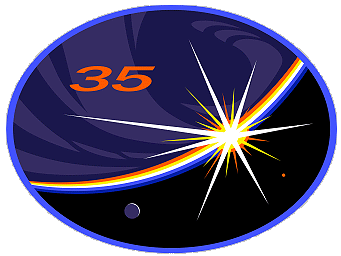 |
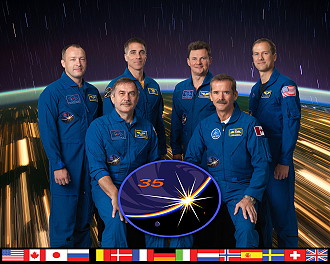 |
alternative crew photo |
![]()
Crew, launch- and landing data
| No. | Nation | Surname | Given names | Position | Spacecraft (launch) |
Launch date |
Launch time |
Spacecraft (landing) |
Landing date |
Landing time |
Mission duration |
Orbits |
| 1 | Hadfield | Chris Austin | ISS-CDR | Soyuz TMA-07M | 19.12.2012 | 12:12:35.340 UTC | Soyuz TMA-07M | 14.05.2013 | 02:30:47.6 UTC | 145d 14h 18m 12s | 2261 | |
| 2 | Vinogradov | Pavel Vladimirovich | Flight Engineer-1 | Soyuz TMA-08M | 28.03.2013 | 20:43:20.288 UTC | Soyuz TMA-08M | 11.09.2013 | 02:58:28.5 UTC | 166d 06h 15m 08s | 2581 | |
| 3 | Misurkin | Aleksandr Aleksandrovich | Flight Engineer-2 | Soyuz TMA-08M | 28.03.2013 | 20:43:20.288 UTC | Soyuz TMA-08M | 11.09.2013 | 02:58:28.5 UTC | 166d 06h 15m 08s | 2581 | |
| 4 | Cassidy | Christopher John "Chris" | Flight Engineer-3 | Soyuz TMA-08M | 28.03.2013 | 20:43:20.288 UTC | Soyuz TMA-08M | 11.09.2013 | 02:58:28.5 UTC | 166d 06h 15m 08s | 2581 | |
| 5 | Romanenko | Roman Yuriyevich | Flight Engineer-4 | Soyuz TMA-07M | 19.12.2012 | 12:12:35.340 UTC | Soyuz TMA-07M | 14.05.2013 | 02:30:47.6 UTC | 145d 14h 18m 12s | 2261 | |
| 6 | Marshburn | Thomas Henry "Tom" | Flight Engineer-6 | Soyuz TMA-07M | 19.12.2012 | 12:12:35.340 UTC | Soyuz TMA-07M | 14.05.2013 | 02:30:47.6 UTC | 145d 14h 18m 12s | 2261 |
unofficial Backup Crew
| No. | Nation | Surname | Given names | Position |
| 1 | Parmitano | Luca Salvo | ISS-CDR | |
| 2 | Kotov | Oleg Valeriyevich | Flight Engineer | |
| 3 | Ryazansky | Sergei Nikolayevich | Flight Engineer | |
| 4 | Hopkins | Michael Scott | Flight Engineer | |
| 5 | Yurchikhin | Fyodor Nikolayevich | Flight Engineer | |
| 6 | Nyberg | Karen Lujean | Flight Engineer |
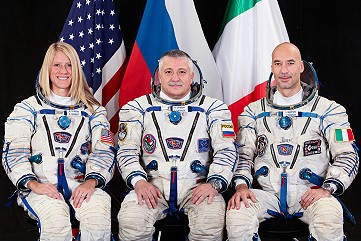 |
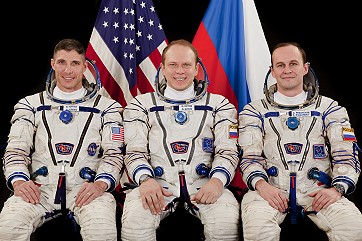 |
 |
Expedition Report
|
Launch from the Baikonur Cosmodrome (Pavel
Vinogradov, Aleksandr
Misurkin and Christopher
Cassidy with
Soyuz
TMA-08M). Roman
Romanenko, Chris
Hadfield and Thomas
Marshburn were onboard since December 21, 2012 (arrival with
Soyuz
TMA-07M). ISS Expedition 35 began with the undocking of spacecraft Soyuz TMA-06M on March 15, 2013 at 23:42:53 UTC. The former Expedition 34 (Oleg Novitsky, Yevgeni Tarelkin and Kevin Ford) returned safely to Earth. With the arrival of Soyuz TMA-08M on March 29, 2013 the Expedition 35 became a six-person-crew. Soyuz TMA-08M carried Pavel Vinogradov, Aleksandr Misurkin and Christopher Cassidy to the space station. The first EVA was performed by Pavel Vinogradov and Roman Romanenko on April 19, 2013 (6h 38m). They installed and connected the Obstanovka plasma wave experiment, a Russian investigation into space weather in Earth’s upper atmosphere. This task includes the planned jettison of two probe containers and a cable reel. They then removed a container from the Russian experiment Biorisk, which looks at the effects of microbial bacteria and fungus on structural materials used in spacecraft construction. Progress M-19M was launched on time at 10:12 UTC on April 24, 2013 by a Soyuz-U carrier rocket at the Baikonur Cosmodrome in Kazakhstan. Progress M-19M achieved soft docking with the ISS on April 26, 2013 at 12:25 UTC to the back docking port of the Zvezda Service Module, and hard docking was complete at 12:34 UTC. Due to the failure of the deployment of one of the spacecraft's Kurs antennae, a software patch was sent up from Russian controllers to bypass restrictions on the Kurs approach. The manual TORU system was on standby with cosmonauts Roman Romanenko and Pavel Vinogradov on the controls in case of a Kurs failure. In the end the automated rendezvous and docking operation procedures using the Kurs docking system aboard the ISS and the Progress was used, although the docking velocity was slower than normal to give engineers a good look at the antenna through the station's camera system. During the docking the ISS and Progress M-19M were orbiting 261 miles (420 km) above the Kazakhstan-China border. Progress M-19M delivered about 365 kilograms (805 lb) of propellant, 50 kilograms (110 lb) of oxygen and air, 410 kilograms (900 lb) of water and about 1,540 kilograms (3,400 lb) of spare parts, scientific equipment and other supplies to the Space Station. Progress M-19M undocked from the Zvezda module of the ISS at 13:59 UTC on June 11, 2013. The undocking paved the way for European Space Agency's ATV-4 Albert Einstein to subsequently dock with the ISS. Soon after the undocking Progress M-19M entered an independent orbit to begin a one-week free flight and conducted the Radar-Progress experiment. The goal of the Radar-Progress experiment (also conducted on previous Progress flights) is to investigate the density, size and reflectivity of the ionosphere environment around the spacecraft due to engine burns. During the experiment, the spacecraft was tracked by the Institute of Solar-Terrestrial Physics, Siberian Branch of the Russian Academy of Sciences in Irkutsk. At the end Radar-Progress experiment, on June 19, 2013 at 13:53 UTC Progress M-19M performed a deorbit burn maneuver using the S5.80 engine of the RTDU-80 main propulsion system. The mission came to an end when the cargo ship performed destructive re-entry and plunged into the Pacific Ocean at 14:40 UTC. A leak of ammonia coolant from the area near or at the location of a Pump and Flow Control Subassembly was detected on May 09, 2013, prompting engineers and flight controllers to begin plans to support the spacewalk. The device contains the mechanical systems that drive the cooling functions for the port truss. Christopher Cassidy and Thomas Marshburn performed this spacewalk on May 11, 2013 (5h 30m). The astronauts inspected and replaced of a pump controller box on the station’s far port truss (P6) suspected of leaking ammonia coolant. Expeditions 35 / 36 continued to expand the scope of research aboard the International Space Station, operating with a predominantly six-person crew. The research mission of the station is to develop knowledge that strengthens our economy and improves life on Earth, advances future exploration beyond Earth orbit, and uses this unique laboratory for scientific discovery. Research results from space studies provide advantages to many areas of our lives here on Earth - health and telemedicine, pharmaceuticals, physical science, engineering safety, better consumer goods, and Earth science and observation. The International Space Station provides a global platform by which to observe our home planet. Through a unique combination of hands-on and automated instruments, the station enables observation of significant natural events and changes in global climate and environmental conditions. Within the station, an automated investigation called the International Space Station SERVIR Environmental Research and Visualization System (ISERV), is a pathfinder investigation designed to gain experience in automated data acquisition of Earth imagery. The knowledge captured from this investigation will lead to the development of enhanced capabilities that will provide useful images to support monitoring and assessment of significant natural events and environmental decision making. ISERV is a joint venture between NASA and the U.S. Agency for International Development. A wide variety of Earth-observation payloads can be attached to the exposed facilities on the station's exterior, one of the first of these is the NASA-sponsored Hyperspectral Imager for the Coastal Ocean (HICO). HICO uses a specialized visible and near-infrared camera to detect, identify, and quantify coastal features from the space station, originally built by the Naval Research Lab. It is now a facility open to NASA and International Space Station National Lab users, such as the Environmental Protection Agency, for collecting coastal data that includes parameters such as water depth and clarity, chlorophyll content, and sea floor composition. This kind of information can tell us about conditions of the coastal ocean that impacts the local environment and its surrounding wildlife. While these are just a few examples of Earth observation capabilities currently being implemented on the station, efforts are underway for the development of increasingly complex instruments that will be delivered to the space station in the future. Physical science investigations during this expedition include Investigating the Structure of Paramagnetic Aggregates from Colloidal Emulsions - 3 (InSPACE-3). NASA is studying fluids containing ellipsoid-shaped particles that change the physical properties of the fluids in response to magnetic fields. These fluids are classified as smart materials, known as magnetorheological fluids, which transition to a solid-like state by the formation and cross-linking of microstructures in the presence of a magnetic field. On Earth, these materials could be used for vibration damping systems for bridges and buildings to better withstand earthquake forces. In typical NASA and international partner fashion, there are many educational activities and investigations planned to teach and inspire students of all ages. The Synchronized Position Hold, Engage, Reorient, Experimental Satellites - Zero - Robotics (SPHERES-Zero-Robotics) is another ongoing activity providing students an opportunity to design research for the station, using their math skills to write algorithms while allowing them to act as ground controllers. This activity concludes with a competition. Technology demonstrations are also an important component to station research. The Canadian Space Agency (CSA) is continuing performance testing on a miniaturized flow cytometer, with Microflow-1. Using a small amount of liquid (blood or other body fluids) in a small fiber-optic structure enables researchers to quantify the components and monitor physiological and cellular activity - allowing for real-time analysis of blood cells, infections, cancer markers, and other molecular and cellular physical and chemical properties. The goal of this testing in microgravity is to develop a smaller and safer operational instrument that may be certified for real-time medical care and monitoring during space flight. This technology brings the power of molecular biology not only to the space environment, but also can help reduce health care costs in remote regions on Earth. Agriculture and food processing plants may be able to use this technology for onsite quality-control inspections and tests. The station is a unique test bed for future exploration, and benefits from these types of investigations are important to NASA, our international partners, and humankind. Data and experience from space exploration investigations benefits and furthers our ability to travel to and explore the unknown, testing our boundaries. Leaving low-Earth orbit is the next step to expand our horizons, exploring Mars, or an asteroid for instance. Ensuring the health and safety of the crew and vehicle, along with completion of mission goals, is of utmost importance. Many investigations are designed to gather information about the effects of long-duration spaceflight on the human body, which will help us understand complicated processes such as immune and skeletal systems with plans for future human exploration missions. Human research investigations work to address these concerns, while information taken away is applied to similar health issues on Earth when applicable. Currently, the top human spaceflight risk under investigation is the vision issues syndrome reported by astronauts following long-term stays on the station. Several studies have been done in response to this issue, with several more planned. The Prospective Observational Study of Ocular Health in International Space Station Crews (Ocular Health) is one of many new investigations continuing to systematically study the effects of microgravity on astronaut vision. This study will collect data from test subjects before, during, and after a visit to the orbiting lab, using a multitude of screening, measurement, testing, and imaging protocols. Sonographic Astronaut Vertebral Examination (Spinal Ultrasound), a NASA study, is using ultrasound imaging aboard the station to track spinal changes experienced by crew members. These images, combined with pre- and post-flight MRI, will be used to track and determine risk of intervertebral disk damage resulting from extended microgravity exposure, launch or landing forces, or other unidentified causes such as radiation or nutrition/metabolism. This technology adds capabilities for health tracking and illness/injury detection during long-duration spaceflight missions. This technology, with its continued expanded usage, will help people Earth-bound who do not have access to advanced imaging like MRI. NASA's Ultrasonic Background Noise Test (UBNT) will monitor high frequency noise levels generated by station hardware and equipment operating within the U.S. Lab and the Node 3 modules. Information gained from this investigation will assist in developing an automated leak location detection system based on the ultrasonic, or high frequency, noise generated by air leaking through a space structure's pressure wall. Information learned from this research can be used as a new approach to validate the structural integrity of pressurized systems across a broad spectrum of industries - from the station to future space travel vessels and nuclear and chemical industries using high pressure systems and vacuum vessels. Fundamental scientific discovery benefits all of humanity by advancing our understanding of the world around us. The information gleaned from these discoveries may change the primary knowledge base regarding basic concepts and understanding, along with enhancing emerging technologies. Two excellent examples of this are the Alpha Magnetic Spectrometer-02 (AMS) and Robonaut-2, both ongoing investigations. The AMS continues to collect a vast amount of data - measuring almost double the amount researchers expected, at a rate of about 1.2 billion particles per month. The testing of Robonaut's capabilities and movement continues as planned - working through a progression of tests. A human microbiome is the collection of microbes that live in and on the human body at any given time and plays an important role to health, as research has established. The Study of the Impact of Long-Term Space Travel on the Astronauts' Microbiome (Microbiome) is a first-flight investigation for NASA studying the importance of microbiomes to human health and immune systems and potential impact on crew member health, along with microbiome changes associated with exposures to stressful conditions like g-forces, radiation, microgravity, and anxiety. Another first-time study involves Italian principal investigators studying evaporation and combustion of renewable liquid fuels with the Italian Combustion Experiment for Green Air (ICE-GA) experiment. Tests varying pressure and oxygen content of two selected fuels (biofuels or surrogates) will assist in developing combustion models and possible acceleration of adoption of eco-friendly renewable fuels. Finally, the station command changed from Canadian astronaut Chris Hadfield to Russian cosmonaut Pavel Vinogradov. With undocking of Soyuz TMA-07M, carrying Roman Romanenko, Chris Hadfield and Thomas Marshburn on May 14, 2013 at 23:07:54 UTC the Expedition 35 concluded and the new ISS Expedition 36 began. During the stay on board of the ISS the crews of Expeditions 35 / 36 carried out the following scientific experiments: 3DA1 Camcorder (Panasonic 3D Camera) AMS-02 (Alpha Magnetic Spectrometer - 02) AQH Microscope Checkout (Aquatic Habitat Microscope Checkout) Alloy Semiconductor (Crystal Growth of Alloy Semiconductor Under Microgravity) Amine Swingbed (Amine Swingbed) Area PADLES (Area Passive Dosimeter for Life-Science Experiments in Space) BASS (Burning and Suppression of Solids) BCAT-3-4-CP (Binary Colloidal Alloy Test - 3 and 4: Critical Point) BCAT-6-Colloidal Disks (Binary Colloidal Alloy Test - 6 - Colloidal Disks) BCAT-6-PS-DNA (Binary Colloidal Alloy Test - 6: Polystyrene - Deoxyribonucleic Acid) BCAT-6-Phase Separation (Binary Colloidal Alloy Test - 6 - Phase Separation) BCAT-6-Seeded Growth (Binary Colloidal Alloy Test - 6: Seeded Growth) BCAT-C1 (Binary Colloidal Alloy Test - C1) BP Reg (A Simple In-flight Method to Test the Risk of Fainting on Return to Earth After Long-Duration Space Flights) BRIC-17-1 (Biological Research In Canisters-17-1: Undifferentiated Cell development in Arabidopsis plants in Microgravity) BRIC-17-2 (Biological Research in Canisters-17-2: Understanding Anoxic Response in Arabidopsis) Biological Rhythms 48hrs (The effect of long-term microgravity exposure on cardiac autonomic function by analyzing 48-hours electrocardiogram) Bisphosphonates (Bisphosphonates as a Countermeasure to Space Flight Induced Bone Loss) Body Measures (Quantification of In-Flight Physical Changes - Anthropometry and Neutral Body Posture) CARTILAGE (CARTILAGE) CCF (Capillary Channel Flow) CEO (Crew Earth Observations) CETSOL-2 (Columnar-to-Equiaxed Transition in Solidification Processing-2) CFE-2 (Capillary Flow Experiment - 2) CSLM-3 (Coarsening in Solid Liquid Mixtures-3) CVB-2 (Constrained Vaper Bubble-2) Cell Bio Tech Demo (Cell Bio Tech Demo) Circadian Rhythms (Circadian Rhythms) Communications and Outreach 2-ARISS (Communications and Outreach 2 - ARISS) Communications and Outreach 2-Podcasts (Communications and Outreach 2 - Podcasts) DECLIC HTI-R (DEvice for the study of Critical LIquids and Crystallization - High Temperature Insert-Reflight) DECLIC-ALI (DEvice for the study of Critical LIquids and Crystallization - Alice Like Insert) DIAPASON (Very high-accuracy environmental automatic control, and pollution monitoring and recording. The data recorded are the type of pollutant and the relevant chemical concentration.) DOD SPHERES-RINGS (Department of Defense Synchronized Position, Hold, Engage, Reorient, Experimental Satellites-RINGS) DOSIS-3D (Dose Distribution Inside the International Space Station - 3D) DTN (Disruption Tolerant Networking for Space Operations) Dynamic Surf (Experimental Assessment of Dynamic Surface Deformation Effects in Transition to Oscillatory Thermo capillary Flow in Liquid Bridge of High Prandtl Number Fluid) EPO-Demos (Education Payload Operation - Demonstrations) EarthKAM (Earth Knowledge Acquired by Middle School Students) Energy (Astronaut's Energy Requirements for Long-Term Space Flight) ExHam (Astrobiology Exposure and Micrometeoroid Capture Experiments) FASES (Fundamental and Applied Studies of Emulsion Stability) FLEX-2 (Flame Extinguishment Experiment - 2) Functional Task Test (Physiological Factors Contributing to Postflight Changes in Functional Performance) HET-Smartphone (Human Exploration Telerobotics Smartphone) HREP-HICO (HICO and RAIDS Experiment Payload - Hyperspectral Imager for the Coastal Ocean) HREP-RAIDS (HICO and RAIDS Experiment Payload - Remote Atmospheric and Ionospheric Detection System (RAIDS)) HiMassSEE (Spacecraft Single Event Environments at High Shielding Mass) Hicari (Growth of Homogeneous SiGe Crystals in Microgravity by the TLZ Method) Hip QCT (Feasibility Study: QCT Modality for Risk Surveillance of Bone - Effects of In-flight Countermeasures on Sub-regions of the Hip Bone.) I-STAR Crew Autonomous Procedures (ISS Testbed for Analog Research Crew Autonomous Procedures) ICE-GA (Italian Combustion Experiment for Green Air) ISERV (ISS SERVIR Environmental Research and Visualization System) ISS Ham Radio (International Space Station Ham Radio) ISS High Efficiency Particle Filter Analysis (International Space Station High Efficiency Particle Filter Analysis) Ice Crystal 2 (Crystal growth mechanisms associated with the macromolecules adsorbed at a growing interface - Microgravity effect for self-oscillatory growth - 2) Immuno (Neuroendocrine and Immune Responses in Humans During and After Long Term Stay at ISS) Integrated Cardiovascular (Cardiac Atrophy and Diastolic Dysfunction During and After Long Duration Spaceflight: Functional Consequences for Orthostatic Intolerance, Exercise Capability and Risk for Cardiac Arrhythmias) Intervertebral Disc Damage (Risk of Intervertebral Disc Damage after Prolonged Space Flight) JAXA EPO 10 (JAXA Education Payload Observation 10) JAXA PCG (Japan Aerospace Exploration Agency Protein Crystal Growth) JAXA-Commercial (Japan Aerospace Exploration Agency - Commercial Payload Program) Journals (Behavioral Issues Associated with isolation and Confinement: Review and Analysis of Astronaut Journals) MAXI (Monitor of All-sky X-ray Image) MCE (Multi-mission Consolidated Equipment) MICAST-2 (The Microstructure Formation in Casting of Technical Alloys under Diffusive and Magnetically Controlled Convective Conditions-2) MISSE-8 (Materials International Space Station Experiment - 8) MVIS Controller-1 (MVIS Controller 1) Manual Control (Assessment of Operator Proficiency Following Long-Duration Space Flight) Marangoni-Exp (Chaos, Turbulence and its Transition Process in Marangoni Convection-Exp) Marangoni-UVP (Spatio-temporal Flow Structure in Marangoni Convection) Medaka Osteoclast (Medaka Osteoclast) Microbiome (Study of the Impact of Long-Term Space Travel on the Astronauts' Microbiome) Microflow1 (Microflow 1 technology demonstration) NanoRacks-PCG-1 (NanoRacks-Protein Crystal Growth-1) Neurospat (Effect of Gravitational Context on EEG Dynamics: A Study of Spatial Cognition, Novelty Processing and Sensorimotor Integration) Nutrition (Nutritional Status Assessment) Ocular Health (Prospective Observational Study of Ocular Health in ISS Crews) Pro K (Dietary Intake Can Predict and Protect Against Changes in Bone Metabolism during Spaceflight and Recovery) RRM-P2 (Robotic Refueling Mission Phase 2) Radi-N2 (Radi-N2 Neutron Field Study) Radiation Environment Monitor (Radiation Environment Monitor) Reaction Self Test (Psychomotor Vigilance Self Test on the International Space Station) Repository (National Aeronautics and Space Administration Biological Specimen Repository) Resist Tubule (Mechanisms of Gravity Resistance in Plants From Signal Transformation and Transduction to Response) Reversible Figures (Perspective Reversible Figures in Microgravity) Robonaut (Robonaut) SATS-Interact (Supervision of Autonomous and Teleoperated Satellites - Interact) SCAN Testbed (Space Communications and Navigation Testbed) SEDA-AP (Space Environment Data Acquisition Equipment - Attached Payload) SMILES (Superconducting Submillimeter-Wave Limb-Emission Sounder) SNFM (Serial Network Flow Monitor) SPHERES-VERTIGO (Synchronized Position, Hold, Engage, Reorient, Experimental Satellites - VERTIGO) SPHERES-Zero-Robotics (Synchronized Position Hold, Engage, Reorient, Experimental Satellites-Zero-Robotics) SSAF2013 (Space Seeds for Asian Future 2013) STP-H3-Canary (Space Test Program - Houston 3 - Canary) STP-H3-DISC (Space Test Program - Houston 3 - Digital Imaging Star Camera) STP-H3-MHTEX (Space Test Program - Houston 3 - Massive Heat Transfer Experiment) STP-H3-VADER (Space Test Program - Houston 3 - Variable emissivity radiator Aerogel insulation blanket Dual zone thermal control Experiment suite for Responsive space) Salivary Markers (The Effects of Long-Term Exposure to Microgravity on Salivary Markers of Innate Immunity) Sarcolab (Myotendinous and Neuromuscular Adaptation to Long-termSpaceflight) Seedling Growth (Seedling Growth, formerly Seed Growth-2) Solar-SOLACES (Sun Monitoring on the External Payload Facility of Columbus - SOLar Auto-Calibrating EUV/UV Spectrophotometers) Solar-SOLSPEC (Sun Monitoring on the External Payload Facility of Columbus -Sun Monitoring on the External Payload Facility of Columbus -SOLar SPECtral Irradiance Measurements) Space Headaches (Space Headaches) Space Pup (Effect of space environment on mammalian reproduction) SpaceDRUMS (Space Dynamically Responding Ultrasonic Matrix System) Spinal Ultrasound (Sonographic Astronaut Vertebral Examination) Stem Cells (Study on the Effect of Space Environment to Embryonic Stem Cells to Their Development) Surface Telerobotics (Surface Telerobotics) Tomatosphere-III (Tomatosphere-III) TriTel (3D Silicon Detector Telescope) UBNT (Ultrasonic Background Noise Test) V-C REFLEX (Plastic alteration of vestibulo-cardiovascular reflex and its countermeasure) VIABLE ISS (eValuatIon And monitoring of microBiofiLms insidE International Space Station) Vascular (Cardiovascular Health Consequences of Long-Duration Space Flight) Vessel ID System (Vessel ID System) Vessel Imaging (Vascular Echography). |
EVA data
| Name | Start | End | Duration | Mission | Airlock | Suit | |
| EVA | Romanenko, Roman | 19.04.2013, 14:0? UTC | 19.04.2013, 20:4? UTC | 6h 38m | ISS-35 | ISS - Pirs | Orlan-MK No. 6 |
| EVA | Vinogradov, Pavel | 19.04.2013, 14:0? UTC | 19.04.2013, 20:4? UTC | 6h 38m | ISS-35 | ISS - Pirs | Orlan-MK No. 4 |
| EVA | Cassidy, Christopher | 11.05.2013, 12:44 UTC | 11.05.2013, 18:15 UTC | 5h 30m | ISS-35 | ISS - Quest | EMU No. 3010 |
| EVA | Marshburn, Thomas | 11.05.2013, 12:44 UTC | 11.05.2013, 18:15 UTC | 5h 30m | ISS-35 | ISS - Quest | EMU No. 3011 |
ISS Assembly
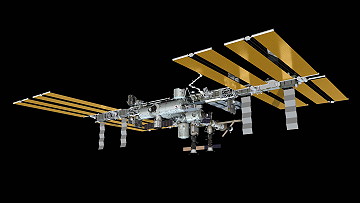 |
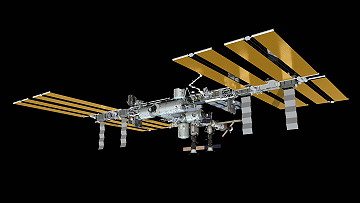 |
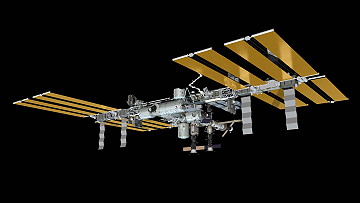 |
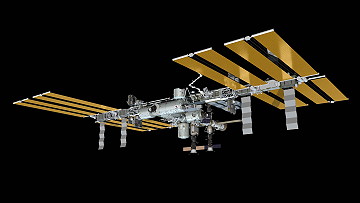 |
Photos
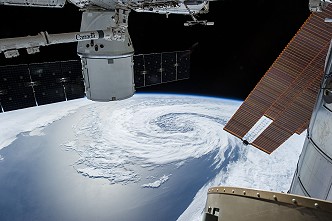 |
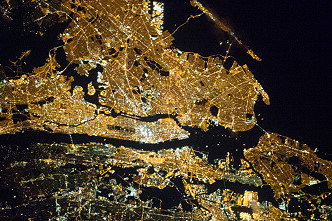 |
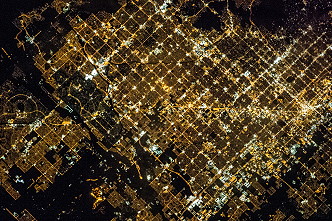 |
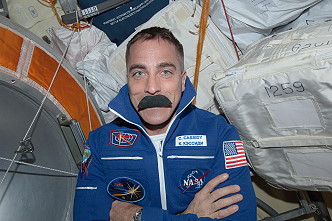 |
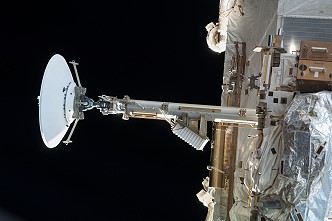 |
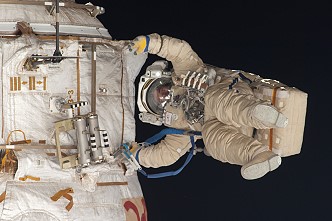 |
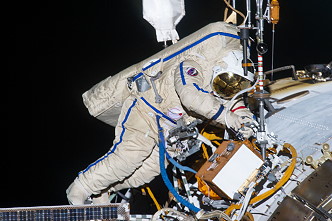 |
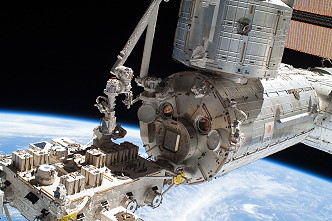 |
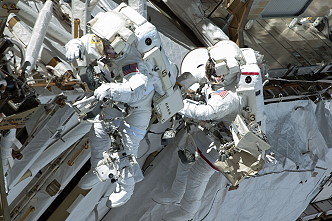 |
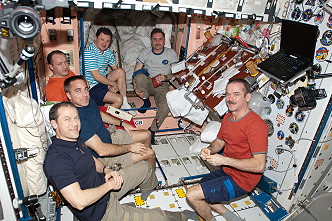 |
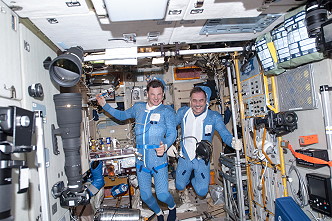 |
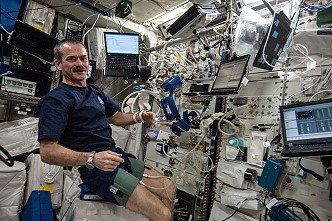 |
more Earth observation photos |
|
more EVA photos |
|
more onboard photos |
|
| © |  |
Last update on December 14, 2020.  |
 |